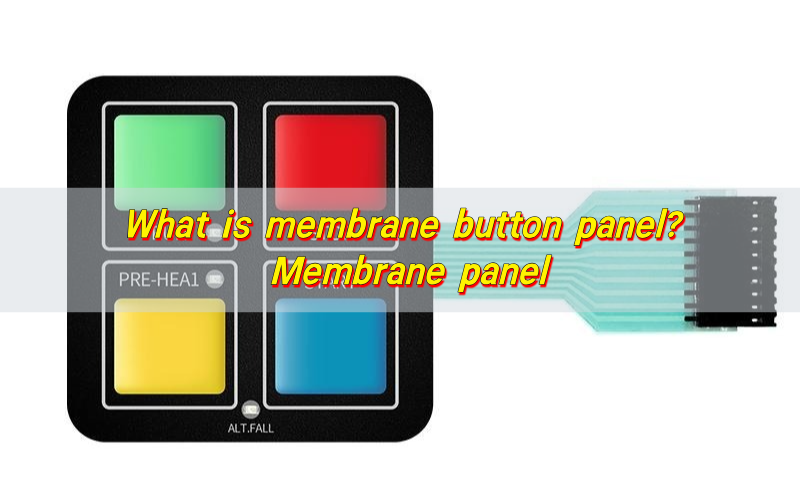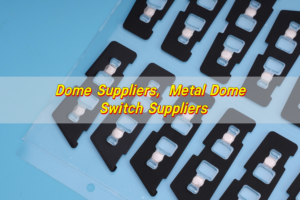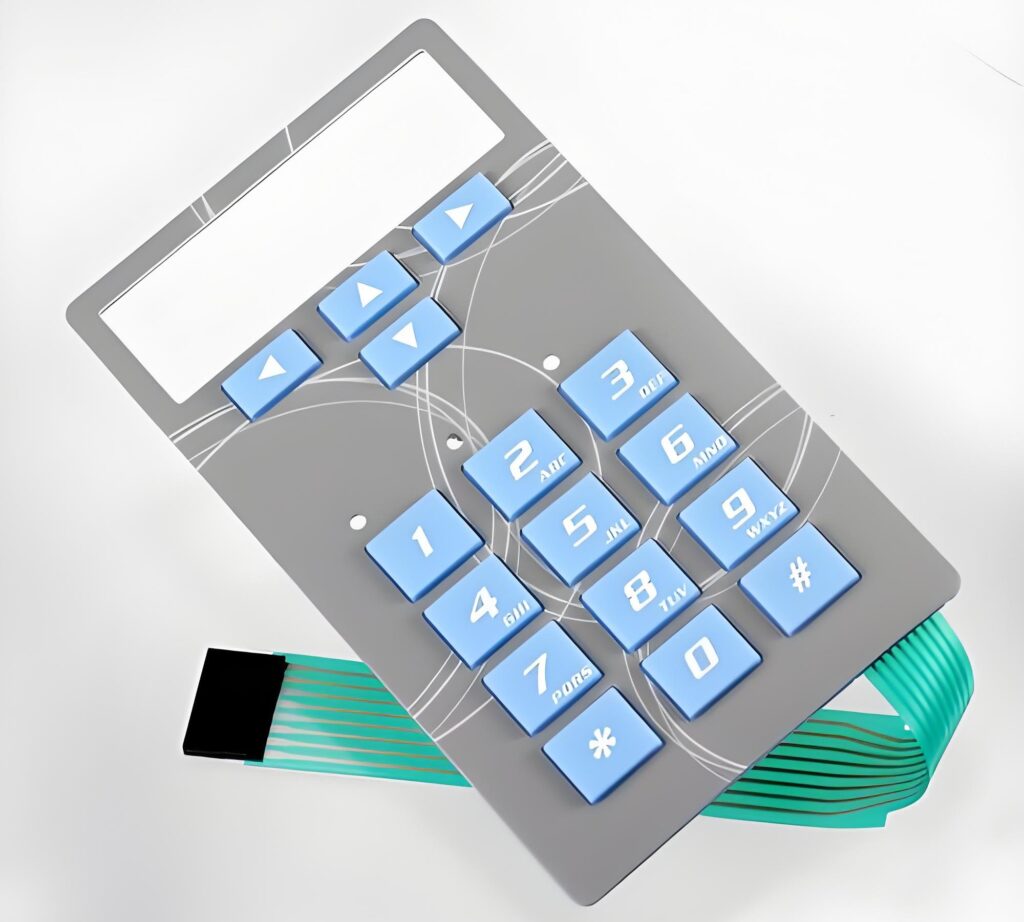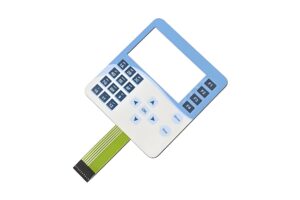The membrane button panel is an electronic component that integrates a membrane switch and a panel, and is widely used in home appliances and industrial equipment. It realizes the key function through a multi-layer membrane structure, and is thin and has good sealing properties. The membrane panel is its appearance part, providing protection and an operating interface. The combination of the two makes the equipment easy to operate and beautiful.
What is a membrane panel?
Membrane panel is a flat, flexible interface that allows users to communicate with electronic devices. It doesn’t use traditional mechanical keys. Instead, it relies on layers of thin material, typically made from flexible polyester or polycarbonate.
The design is sealed and smooth, with printed circuits underneath a pressure-sensitive top layer. When you press a button on the surface, it activates the contact below. It feels like magic, but it’s all science.
Membrane panels are used in everything from microwave ovens to hospital monitoring systems. Their ability to resist dust, moisture, and wear makes them perfect for high-use environments.
What is a membrane key switch?
Membrane key switch is a specific type of button within a membrane panel. It’s built to create a reliable circuit connection when pressed. The switch includes several layers — usually a top graphic overlay, a spacer, a circuit layer, and a backer.
When you press a key, the top layer pushes down, closing the gap between the circuit layers and sending a signal. This design avoids moving parts, making it quieter and less likely to wear out compared to traditional switches.
These switches are common in control panels, remote controls, and even fitness equipment. Their slim profile and strong feedback make them ideal in compact spaces.
What material is membrane button?
The membrane button is typically made of flexible and durable materials. The outer layer is often polyester or polycarbonate. These materials are chosen for their toughness and resistance to chemicals and heat.
The conductive layers inside may use silver ink or copper for signal transmission. The spacer layer, which keeps the circuit open until a button is pressed, is usually made of adhesive-coated PET (polyethylene terephthalate).
How are membrane switches made?
Membrane switch panels are made with a precise layering process. It begins with designing the circuit layout. Manufacturers then print the circuit using conductive inks, typically silver.
Next, the graphic overlay — the top part with symbols and labels — is created. It’s printed with UV-resistant ink to avoid fading over time. Afterward, the layers are assembled using pressure-sensitive adhesive.
This process requires careful alignment. Any misplacement could lead to unresponsive buttons. After assembly, each membrane switch panel is tested for performance, durability, and accuracy.
Some manufacturers even offer custom options. This includes backlighting, tactile feedback (like metal domes), and waterproof sealing.
What are the advantages of a membrane keyboard?
- Sleek Design: Their low profile makes them compact and modern.
- Water and Dust Resistant: Most panels are sealed against environmental damage.
- Durable and Long-Lasting: Without mechanical parts, there’s less that can break.
- Customizable: You can design them with logos, icons, colors, or even lighting.
- Affordable: Production is cost-effective, especially for high-volume use.
What is the disadvantage of membrane keyboard?
Though they’re packed with benefits, membrane keyboards do have a few trade-offs.
- Less Tactile Feedback: Some users feel the press is too soft or lacks a “click.”
- Harder to Repair: If a circuit breaks, the panel might need replacing rather than fixing.
- Not Ideal for Heavy Typing: For long typing sessions, mechanical keys may feel more comfortable.
Still, most of these issues are solved with better design or by using tactile elements like metal domes.
How do rubber membrane buttons work?
In some membrane panels, rubber domes are added under each button. These give a soft, cushioned feel when pressed. The rubber dome pushes the circuit layer down and then springs back into place.
This is common in remote controls and consumer electronics. It adds tactile feedback without adding complexity. The domes are usually made of silicone rubber, which is both flexible and durable.
Rubber domes also act as a natural barrier to dust and moisture. They’re perfect for creating a smooth, sealed interface that still feels responsive.
How long do membrane keys last?
Many are rated for 1 to 5 million presses per button.
That kind of endurance makes them ideal for both industrial and consumer environments. Their durability depends on the materials used and the type of use.
A membrane switch panel manufacturer ensures quality through rigorous testing. They simulate thousands of keypresses to guarantee long-term performance.
If maintained properly and not exposed to extreme conditions, a quality membrane button panel can last for years without failure.
What is the difference between mechanical and membrane switches?
Membrane Switches use pressure on layered circuits. They’re silent, slim, and sealed.
Mechanical Switches use separate moving parts for each key. They’re loud, bulky, and tactile.
Membrane panels are better in environments that require compact design, moisture resistance, and simplicity. Mechanical switches are better for high-speed typing or gaming.
So, it depends on the use case. For control panels, appliances, and outdoor systems, membrane panels win. For intensive typing or gaming, mechanical switches might be preferred.
Real-World applications of membrane switch panels
The use of membrane switch panels is vast and diverse.
- Medical Equipment: Clean, sealed, and easy to sterilize.
- Industrial Machinery: Resistant to oil, dirt, and heavy use.
- Home Appliances: From washing machines to ovens.
- Military Devices: Rugged and designed for harsh conditions.
- Fitness Equipment: Sweat-resistant and durable.
- Security Systems: Sleek interface, easy to operate.
Membrane switch panel repair – is it possible?
In most cases, repairing a membrane switch panel is difficult but not impossible. Minor issues, like loose overlays or moisture intrusion, can be fixed.
However, internal circuit damage usually means replacement. That’s because the layers are sealed and tightly bonded. Once the circuit is broken, it can’t always be patched.
This is why it’s crucial to choose a high-quality membrane switch panel manufacturer. Investing in better materials and workmanship can reduce the risk of failure.
Why choose a trusted membrane switch panel manufacturer?
Choosing a reliable membrane switch panel manufacturer is everything. Look for manufacturers who offer:
Custom designs?In-house testing?High-quality materials?Fast delivery and responsive support
At BEST Technology, we take pride in delivering precision-built membrane panels for every industry. Whether you need complex layouts or simple switches, we’re here to help.
Conclusion:
The membrane button panel is sleek, sealed, and surprisingly powerful. From industrial tools to your home appliances, it plays a vital role in everyday life.
Want to build a custom membrane panel that fits your needs perfectly? We’re here to support your vision. Contact us anytime at sales@metal-domes.com









